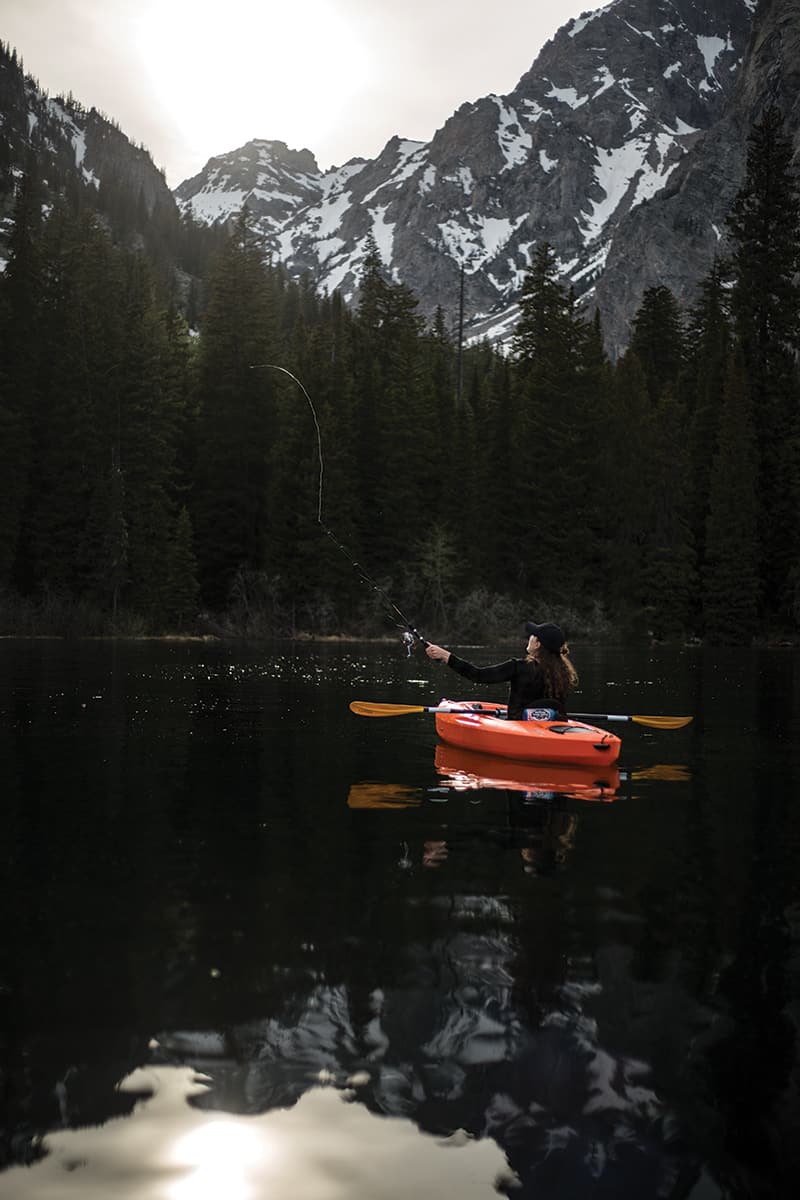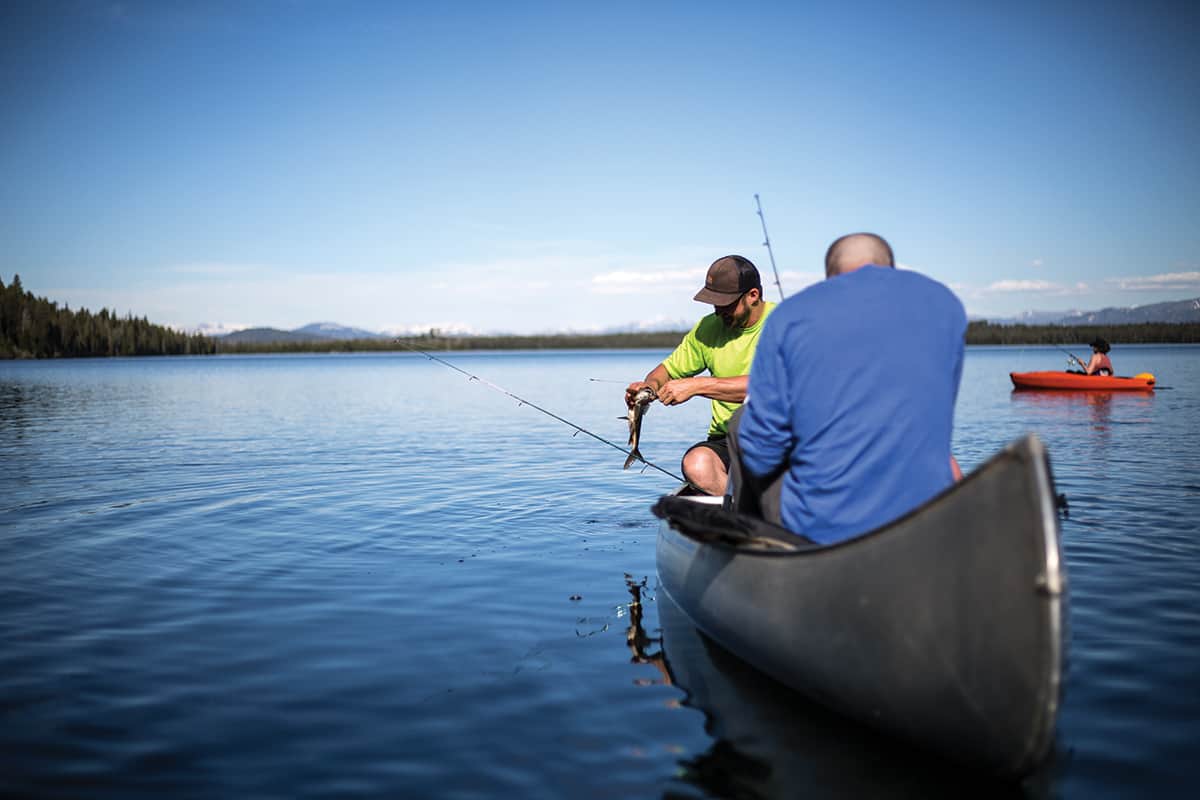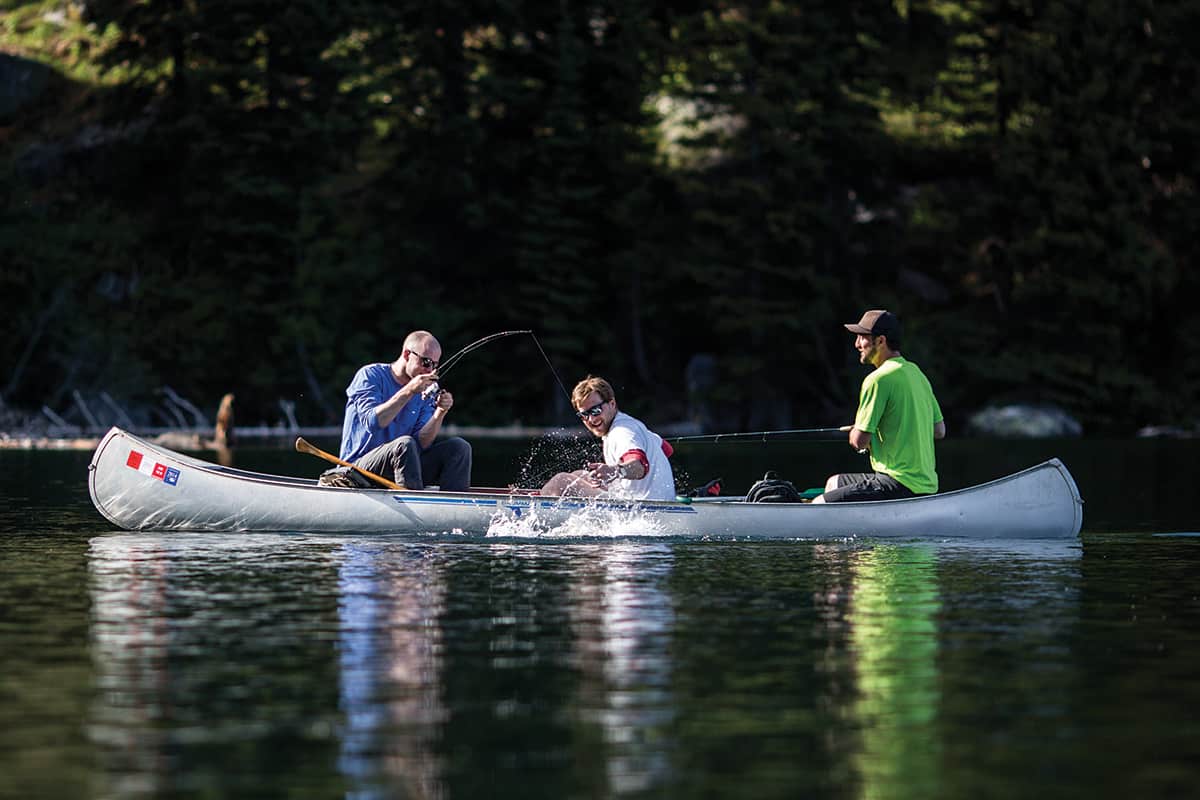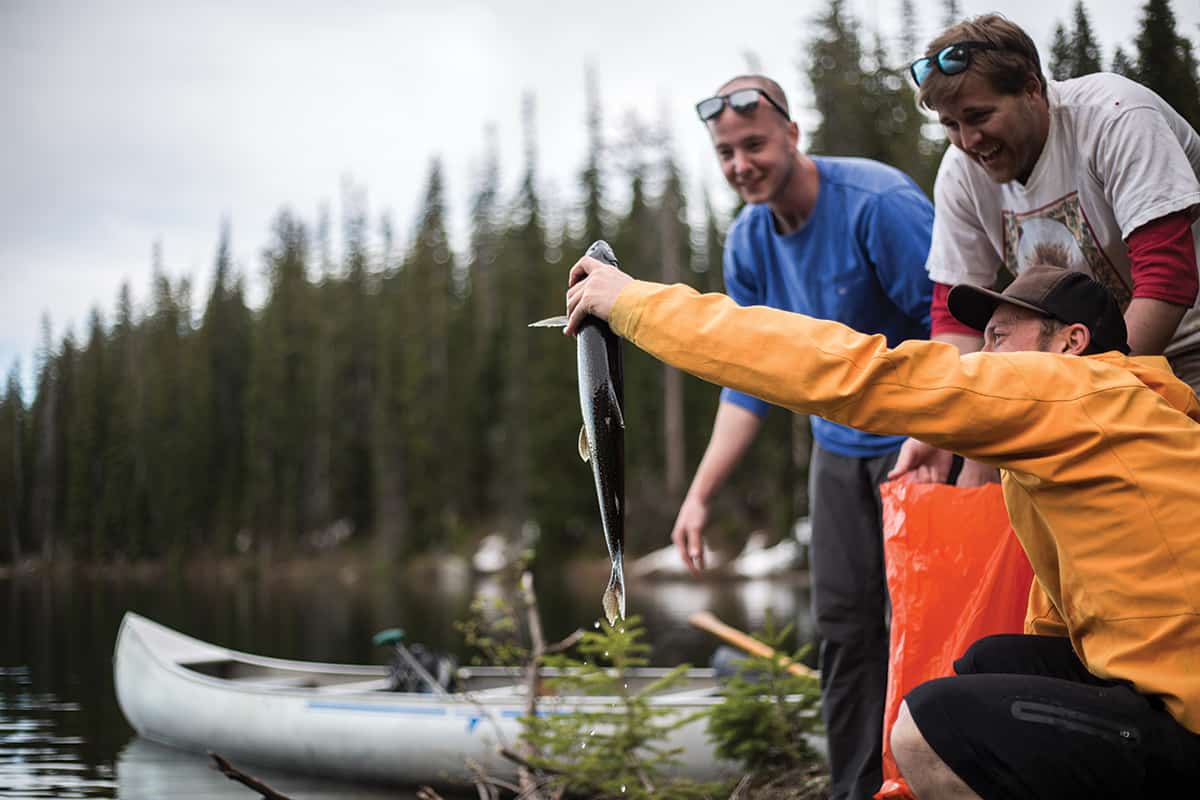Read The
Current Issue
Jackson Hole’s ‘Other’ Angling
Don’t be embarrassed to try spin fishing. Casting and jigging for trout can be top-notch in the valley’s lakes.
By Mike Koshmrl // photography by Ryan dorgan

LURES AREN’T ILLEGAL in Jackson Hole, but sometimes it damn near feels like it. This valley, like much of the Mountain West, is a place where fly fishing is king, and there’s a clear stigma associated with using conventional fishing gear. Anglers come here to huck dry flies from 5-weight rods in pursuit of the Snake River’s prized fine-spotted cutthroat trout, among other species and other rivers and creeks. Throwing pieces of metal from a spinning rod into standing water has less allure. I know this from first-hand experience.
As a fishing-obsessed kiddo growing up in Minnesota, I spent almost every buck I had on spin-fishing gear. Arriving out West—in Colorado—a decade ago, I picked up a packable Reddington fly rod and the lake fishing obsession of my youth was forgotten. Nothing changed when I got to Jackson Hole. My first fly-fishing outing here was a foolish and fruitless late-May attempt at pulling a cutthroat out of a swollen and turbid Fall Creek. Now I know I should have been at Jackson Lake with a spin-fishing setup. But back then I didn’t have that knowledge, much less the confidence to stand up to the local peer pressure that almost says fly fishing is the only type of fishing.
It took four years of living here before I picked up the Cabela rods, Shimano spinning reels, and casting spoons I had so loved and used in my youth. It took one day of spin casting to extinguish my adulthood indifference to the sport. It was a spring day and I went to Phelps Lake in Grand Teton National Park, a lake that I knew was home to lake trout, a.k.a. mackinaw. This species generally inhabits deep waters but can be found and caught in the shallows shortly after ice-off, and again in the fall. Strolling Phelps Lake’s shoreline in solitude while wading its icy waters, I plunked a Kastmaster spoon into the lake again and again until the repetition produced a modest-size mackinaw, then another, and another. Pun intended, I was re-hooked.
In the spring and fall, using little more than a canoe or waders and the most basic fishing gear, I’ve grown fond of pursuing lake trout in places like Phelps, Jackson, and Jenny lakes, as well as destinations farther afield.
This valley, like much of the Mountain West, is a place where fly fishing is king, and there’s a clear stigma associated with using conventional fishing gear.
ROB GIPSON, REGIONAL fisheries supervisor for the Wyoming Game and Fish Department, had the opposite experience of mine: He arrived in Jackson Hole exclusively a spin fisherman and learned and eased his way into fly fishing. He wasn’t particularly vocal about his preference for spin casting, joking that maybe spin fishermen deserve their own support group. “I think a lot of people are closeted spin anglers,” he says. “Especially when I first moved here and didn’t know anything about fly fishing, I felt like people were judging. No one has ever said anything to me, but it was [my] perception.”
Although fly fishing from a driftboat now competes with spin casting for Gipson’s time, he still gets out with his spinning rod on excursions he says are sometimes two parts getting there and one part fishing. “One of my favorite things to do has always been to fish small wilderness lakes,” he says. “Spin fishing [on these] can be very productive, I think because they are smaller and the fish can’t go deep like in a big lake like Jackson Lake or Jenny.”
It took four years of living here before I picked up the Cabela rods, Shimano spinning reels, and casting spoons I had so loved and used in my youth. It took one day of spin casting to extinguish my adulthood indifference to the sport.
Lake trout, which are native to the Great Lakes and much of Canada, typically head for the depths once larger lakes thermally stratify—meaning when warmer water stacks up on top of colder layers. This happens a couple of weeks to a couple of months after ice-off, depending on weather. Once it does, the spin fishing gets difficult, at best, without a bigger boat and technical gear that can get your lure down deep. Big lake cutthroat head deeper as well, but to a lesser degree. Summer visitors who lack fly-fishing chops, but are versed with a spinning reel, can find success by seeking out flowing water. “The Snake can be really good,” Gipson says. (Spin fishing is legal on all Jackson Hole waters with one exception: Flat Creek’s meadow section on the National Elk Refuge.)
IN TERMS OF gear, what works in Jackson Hole is what works in other places. Some of Gipson’s favorite lures include Rooster Tail and Panther Martin spinners and Jake’s Li’l Jake lures. There are also custom-made lures for local waters. Ron Jacobson, who grew up seven miles from Jackson Lake, is the owner and creator of JacobsonBaits, which makes tube jigs that can be found in the aisles of Stone Drug, where he’s worked for twenty years. Stop by and Jacobson will point you in the right direction, and help you pick out gear. But go midsummer looking to spin fish and he’ll be blunt: “I’d tell [you] to go get a guide.”
Nuts & Bolts
Any type of angling in Jackson Hole (and the rest of Wyoming) requires a state fishing license (wgfd.wyo.gov). For nonresidents it’s $102 (annual license) or $14 (daily). Residents pay $27 annually or $6 a day. All annual licenses also require a $12.50 conservation stamp. Starting from scratch, need gear, or want a guide? Signal Mountain Lodge offers guided fishing trips on Jackson Lake from May 19 to September 16. Rates are $115 an hour with a two-hour minimum, or $312 for a half day. 307/543-2831, signalmountainlodge.com







